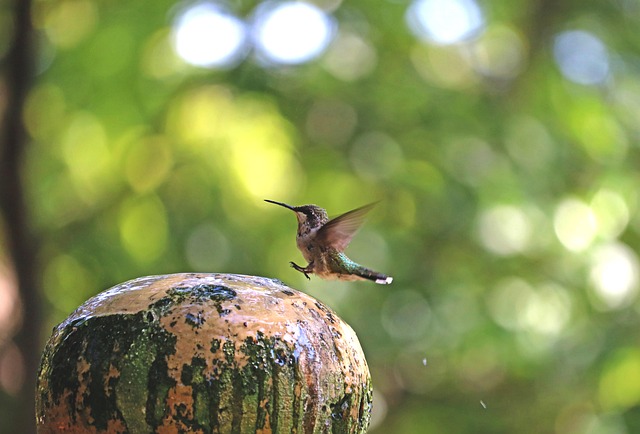As spring approaches, homeowners should prioritize comprehensive backyard upkeep, including removing debris, assessing landscape damage, proper fertilization and watering for healthy plants, ensuring good drainage to reduce mosquito breeding, incorporating organic matter to deter weeds, regular inspections, cleaning, and using organic control methods to manage common pests, implementing physical barriers, avoiding overwatering, planting native species, and mindful compost management for a pest-resistant, vibrant yard.
Managing pests and weeds year-round is essential for maintaining a healthy, vibrant backyard. This comprehensive guide provides practical tips for all seasons, ensuring your yard remains pest-free and lush. From spring cleaning and identifying common spring pests to summer strategies for hot weather control and fall management for winter invaders, we cover it all. Discover organic solutions, seasonal shifts in pest behavior, and long-term planning for effective backyard upkeep.
Spring Preparation: Laying the Foundation for Pest-Free Yards
As spring unfolds, many homeowners are eager to transform their yards into lush oases after a long winter. However, preparing your yard for the new growing season is also an opportunity to lay the foundation for effective pest and weed management throughout the year. Start by assessing any damage caused during winter and clearing away dead foliage or debris that could harbor pests and weeds. Next, implement cultural control methods like proper watering and fertilization to promote healthy grass and plants, making them more resilient against invaders.
Another key aspect of spring preparation is ensuring your yard has adequate drainage and aeration. Well-drained soil reduces standing water where mosquitoes breed, while aeration improves air circulation, fostering a less welcoming environment for grubs and other pests. Additionally, consider incorporating organic matter into the soil to enhance its richness and structure, making it less suitable for weed growth. These proactive measures will not only contribute to your backyard upkeep tips but also serve as a robust defense against both pests and weeds throughout the spring, summer, and beyond.
– Spring cleaning and prep for pest management
As winter winds down, spring brings a fresh start for your backyard. It’s the perfect time to implement essential backyard upkeep tips and prepare for effective pest management. Begin by clearing away debris accumulated during the colder months; this includes dead plants, fallen leaves, and any stored materials that could attract pests. A thorough cleaning creates an unwelcoming environment for insects and rodents, preventing them from establishing breeding grounds or hiding spots.
Once your space is decluttered, assess the landscape. Inspect plants for any signs of damage or illness, as these can be indicators of pest infestations. Prune affected branches and remove any sickly plants to stop the spread. Fertilize and water your garden thoroughly; a healthy, vibrant backyard is less inviting to pests. Lastly, consider incorporating natural pest repellents like herbs, essential oils, or beneficial insects to create a sustainable, eco-friendly solution for year-round protection.
– Identifying common spring pests and weeds
As spring arrives, your backyard comes back to life, but it also attracts certain pests and weeds that were hibernating or dormant during the colder months. Identifying these common invaders early on is crucial for effective year-round backyard upkeep tips. Some of the most prevalent springtime visitors include aphids, slugs, snails, and dandelions. Aphids are small, soft-bodied insects that suck plant sap, causing stunted growth and distorted leaves. Slugs and snails, known for their sluggish movement, can cause significant damage to garden beds by feeding on various plants and leaving behind a trail of mucus. Dandelions, though often considered weeds, are tenacious and quickly spread, competing with desirable plants for nutrients and water.
Regular inspections and proactive measures are key in managing these pests and weeds. Backyards that maintain a clean, tidy appearance are less inviting to them. Remove dead plant material, trim back overgrown vegetation, and ensure there’s no standing water – all of which create ideal hiding spots and breeding grounds for these springtime visitors. Implementing organic control methods like beneficial insects (e.g., ladybugs) or using targeted, eco-friendly pesticides can help keep your backyard vibrant and healthy throughout the season.
– Tips for prevention during this active season
During the active season, proper backyard upkeep tips are essential for preventing pest and weed infestations. Regularly mow your lawn to discourage weed growth, ensuring that clippings are disposed of properly to avoid composting unwanted plants. Also, keep an eye out for any signs of pests early on; treating them promptly can prevent widespread damage. Implement physical barriers like nets or traps to protect vulnerable plants from insects and birds.
Additionally, maintain a healthy lawn by fertilizing and watering appropriately, as a lush, robust lawn is more resistant to weeds. Consider planting native species that are less attractive to pests, and avoid overwatering, as standing water creates ideal breeding grounds for many pests. Regularly clean your garden to remove debris where seeds might take root, and be mindful of the type and placement of compost piles to prevent attracting unwanted visitors.
Year-round backyard upkeep requires proactive measures, especially in dynamic seasons like spring. By combining thorough spring preparation, identifying common pests and weeds early on, and implementing preventive strategies, you can establish a robust defense against these unwelcome visitors. Remember, a well-maintained yard is not just aesthetically pleasing; it’s also healthier for your plants, pets, and family. Incorporate these backyard upkeep tips into your routine to ensure a peaceful and pest-free outdoor space all year round.
